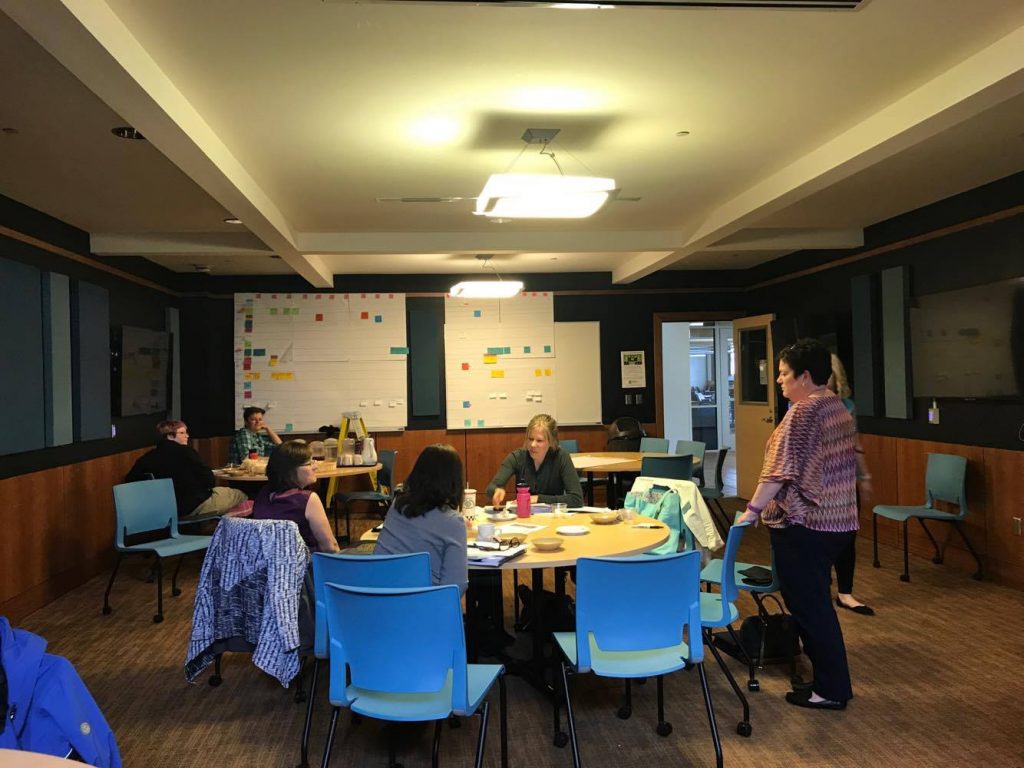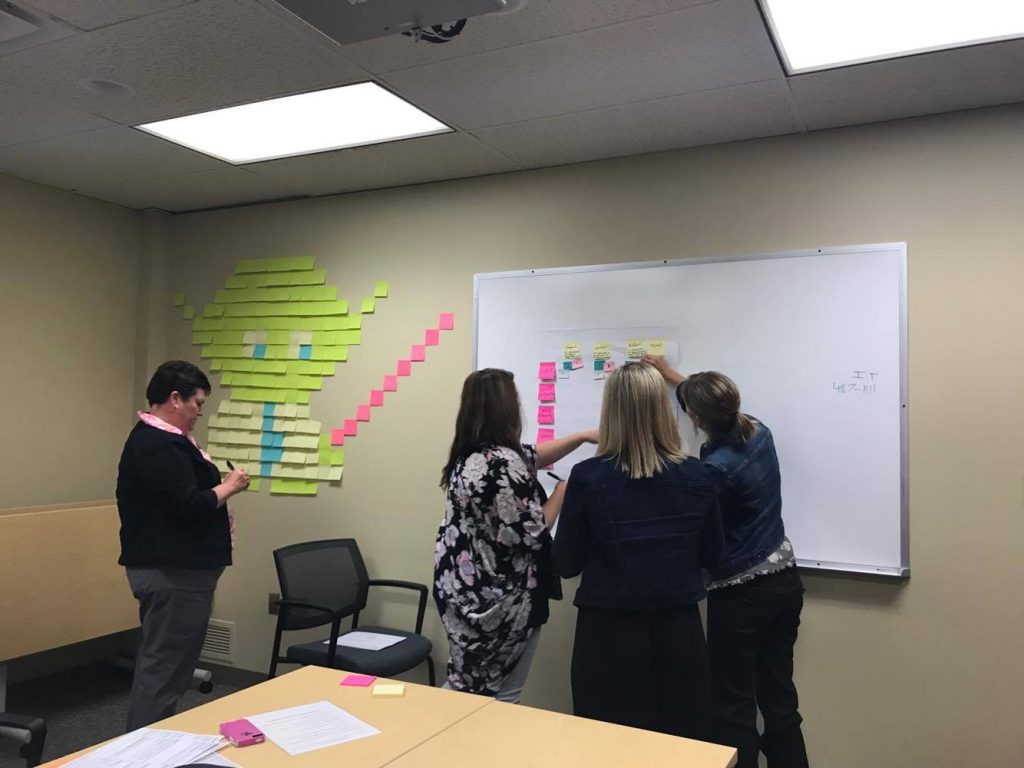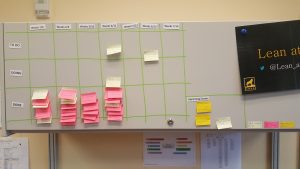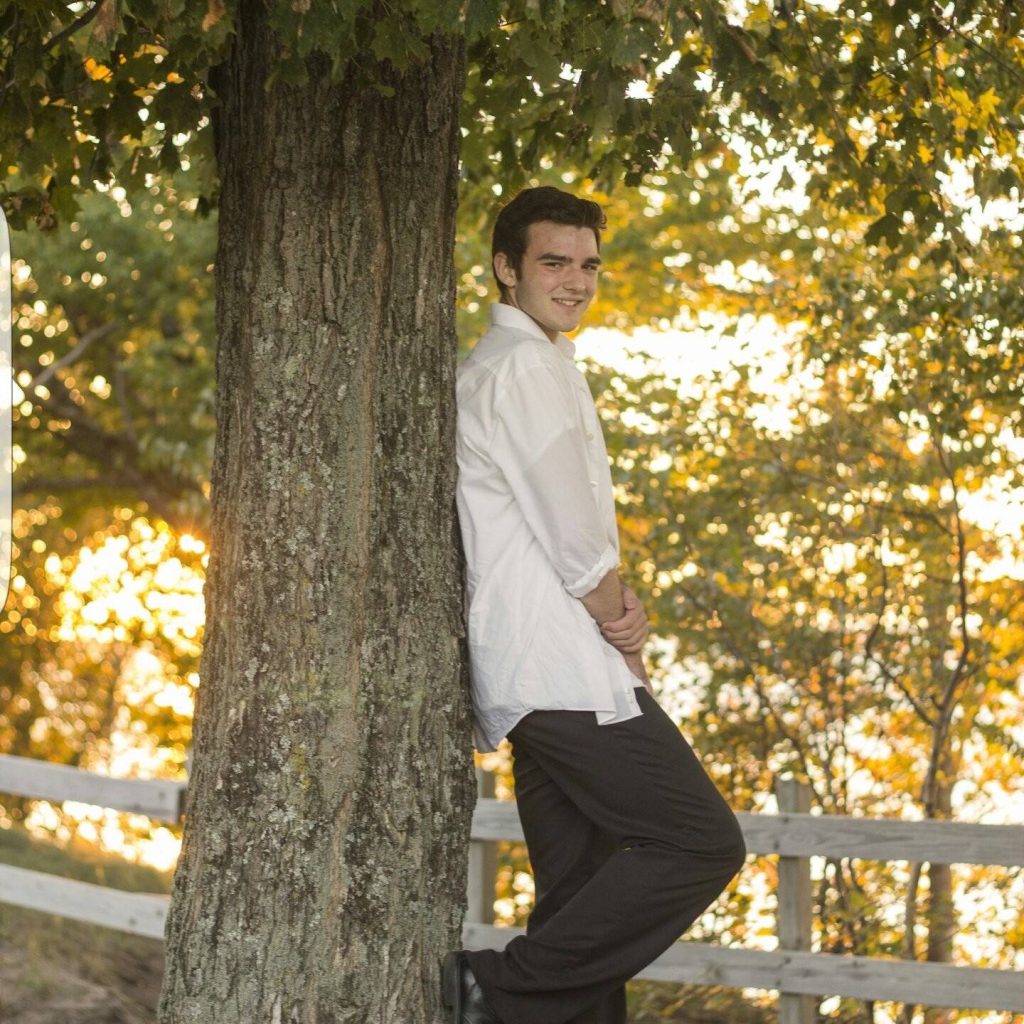Just after the semester started, I completed PIC training, and one of the first things I was assigned to as a PIC was to take over the MUB basement Kaizen from Matt, since he left the office. I was kind of terrified of it at first because it’d be technically my first Kaizen on my own, and I didn’t really have very much of an idea of what Kaizen’s really were yet, so I’m sure you can tell why I was a bit scared of it.
I started working with the team on the Kaizen at a newspaper meeting since the Kaizen technically started in January of 2017, so the processes at the beginning of the Kaizen were already long gone. Anyway, the first newspaper meeting I went to, we did a Gemba Walk through the basement and there was still some standards to be set with the janitorial supplies/carts, fire safety was another thing that still had to be implemented, and some small clutter things were waiting to be moved out. The next newspaper meeting, during our Gemba Walk, everything was moved/implemented, and there wasn’t very much left to do in the Kaizen itself. However, the two sides (Dining & Auxiliary Services/MUB) that have control of the MUB Basement decided to split up to assign uses for their parts of the basement.
Going through some of the pictures of the basement prior to the Kaizen, it’s so unbelievable seeing the changes that have been made, going from not have very much if ANY space to even walk, to having rooms opened and things having their own place, it’s a transformation unlike any other. Also the team has been fortunate enough to learn a lot of safety and disposal laws during the Kaizen. Even during the closure meeting during reflections, the only thing that the team could really say was “WOW.”
Now the two teams are doing their own Kaizens on their portions of the MUB Basement to see what to do with their areas, what processes work best for them, and what they’re trying to achieve. I’m very excited to see what will happen in the future given the tremendous transformation already. Both teams are just past the pre-meeting stage, and are moving on to the Kaizen days, so I can’t wait to see what’ll happen.







